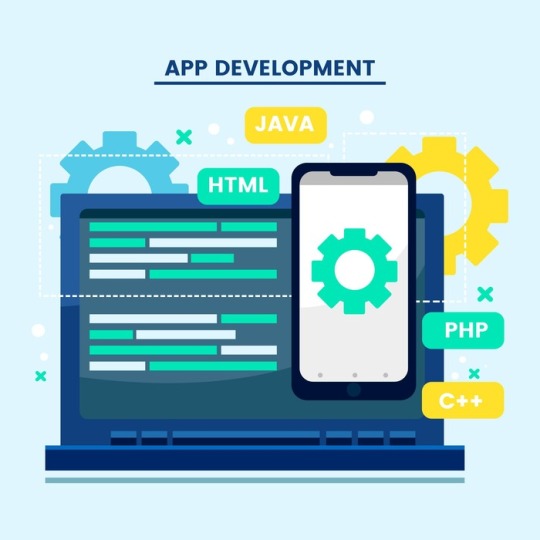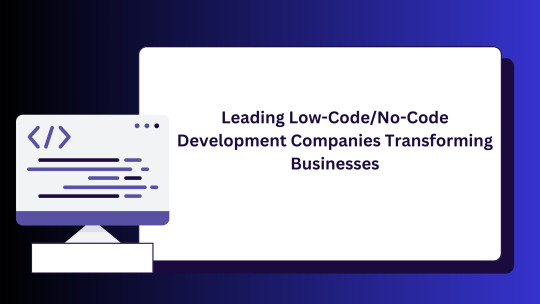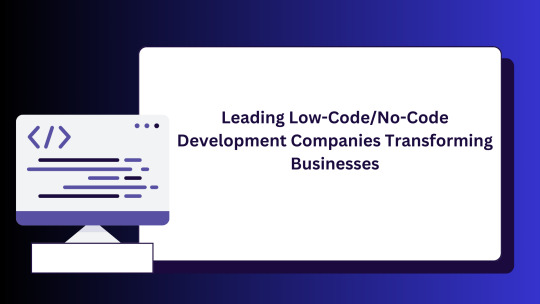#Appian Way Productions
Explore tagged Tumblr posts
Text
youtube
Killers of the Flower Moon — Official Trailer 2
Synopsis
Based on David Grann’s broadly lauded best-selling book, “Killers of the Flower Moon" is set in 1920s Oklahoma and depicts the serial murder of members of the oil-wealthy Osage Nation, a string of brutal crimes that came to be known as the Reign of Terror.
#Killers of the Flower Moon#Leonardo DiCaprio#Robert De Niro#Jesse Plemons#Lily Gladstone#Tantoo Cardinal#Brendan Fraser#John Lithgow#Martin Scorsese#Apple Studios#Imperative Entertainment#Sikelia Productions#Appian Way Productions#Apple TV Plus#Apple TV+#film#live action#live action film
47 notes
·
View notes
Text







Killers of the Flower Moon (2023)
Directed by Martin Scorsese
Cinematography by Rodrigo Prieto
#Killers of the Flower Moon#Martin Scorsese#Rodrigo Prieto#Leonardo DiCaprio#Lily Gladstone#Robert De Niro#Scott Shepherd#Jesse Plemons#Eric Roth#Thelma Schoonmaker#Robbie Robertson#Apple TV+#Paramount Pictures#Apple Original Films#Apple Studios#Imperative Entertainment#Sikelia Productions#Appian Way Productions#crime drama#Movies Frames#movie in pictures#movie in frames#movie frames#movie#movies#film frames#film#films#cinematography#filmography
13 notes
·
View notes
Text
According to producer Andrew Lazar […] the creative team has remained intact and is pushing forward behind the scenes. “There will be big updates soon,” Andrew Lazar promised, indicating that fans can expect concrete news—possibly including casting announcements, production timelines, or concept reveals—in the near future.
Originally announced over a decade ago, the live-action Akira movie has seen numerous starts, stops, and shakeups. With Taika Waititi still attached to direct and Leonardo DiCaprio’s Appian Way on board as a producer, the film is now closer than ever to leaving the drawing board and entering full-scale production.
15 notes
·
View notes
Text
youtube
The Featherweight | Official Trailer
Knew someone was making a Willie Pep film. Didn't realize it was already made. Hopefully someone picks it up and gets released somwhere.
Based on the true story of the winningest American boxer in the history of the sport. The Featherweight is coming to theaters September 20th. Set in the mid-1960s in Hartford, Connecticut, The Featherweight presents a gripping chapter in the true-life story of Italian-American boxer Willie Pep the winningest fighter of all time—who, down and out in his mid-40s and with his personal life in shambles, decides to make a return to the ring, at which point a documentary camera crew enters his life. Painstakingly researched and constructed, the film is a visceral portrait of the discontents of twentieth-century American masculinity, fame and self-perception. The feature debut of director Robert Kolodny had its world premiere at the 80th Venice International Film Festival. The impressive cast is led by James Madio (The Penguin, Band of Brothers), Ruby Wolf in her feature debut, Keir Gilchrist (Love & Death, Atypical), Stephen Lang (Avatar Franchise), Ron Livingston (The Flash, Loudermilk) Lawrence Gilliard Jr. (The Walking Dead, One Night in Miami), Shari Albert (The Brothers McMullen) and undefeated professional featherweight boxer Bruce Carrington. Presented by Appian Way Productions and Golden Ratio Films.
4 notes
·
View notes
Text
It was thought at the time to represent the realities of ancient Rome and it took pride of place in the Getty "Roman Villa" in 1974. The apparent authentic "Romanism" of the painting had even inspired certain scenes in Cecil B. De Mille's Hollywood production of "Cleopatra" of 1934. However, further research into the painting's subject and significance suggests it is more an idealised Victorian representation of spring, rather than a specific Roman festival.
The scene, with a procession of young people, flowers and musical instruments, is a joyful springtime celebration. It has been likened to the Roman spring festivals: Floralia, Cerealia or Ambarvalia. The artist may have been inspired by descriptions of the spring festival in honour of Ceres or Flora as described by the Roman poet Ovid.
...
One last detail gives us an insight into the Roman period that Alma Tadema wanted to represent in his celebration of spring: the inscription and relief on the archway at centre left of the picture. The artist has reproduced the dedication sculpted on the Arch of Trajan in Benevento, near Rome, built to commemorate the opening of the Appian Way and completed during the reign of the Emperor Hadrian (reigned 117-138). This leads us to presume that the setting for Lawrence Alma Tadema's joyous "Spring" is Emperor Hadrian's prosperous Rome.
...
He (Lawrence) had a passion for nature and for ancient, particularly Roman, history; both of these interests are evident in many of his paintings. "Spring" is the quintessence of the Lawrence Alma Tadema artistic style. He paid great attention to natural and historic details in his paintings, striving for authenticity. He was an avid historical researcher and always strove to get historic details exactly right. Where the setting is of Roman inspiration, as here, he made sure that architecture, dress and musical instruments were accurate. He had a personal archive of photographs depicting Roman antiquities that enabled him to get true-to-life historical accuracy in his paintings. He possessed a tremendous curiosity about all things ancient and acquired a precious expertise which he poured into his art.
Source: Spring by Lawrence Alma Tadema (thehistoryofart.org)

‘Spring’ (detail) by Lawrence Alma-Tadema, c. 1894.
#spring by lawrence alma tadema#lawrence alma tadema#rome in art#paintings#art#1894#victorian neoclassical#rome in neoclassicism#neoclassicism#neoclassical art#neoclassical
3K notes
·
View notes
Text
Simplify, Automate, Scale: A New Way for Teams to Work
In today's fast-paced digital environment, teams across industries face mounting pressures to deliver results swiftly and efficiently. Manual tasks, fragmented systems, and limited technical resources often hinder productivity and innovation. Enter top low code tools—platforms designed to streamline operations, foster collaboration, and accelerate digital transformation.
Supporting Diverse Teams
Top low code tools cater to a broad spectrum of users, from non-technical staff to seasoned developers, addressing unique challenges and enhancing workflows.
Busy Teams & Founders
Operations teams and project managers often juggle numerous daily tasks. Top low code tools like Mendix and Appian offer intuitive interfaces and automation capabilities, enabling these professionals to streamline repetitive processes and focus on strategic initiatives.
Startups, especially those scaling rapidly with limited tech bandwidth, benefit from platforms such as Zoho Creator, which provide customizable solutions without the need for extensive coding knowledge.
Non-Tech Creators
Designers, marketers, and content teams require tools that allow them to build and modify applications without relying heavily on IT departments. Platforms like UI Bakery and Appsmith empower these users to create internal tools and dashboards, enhancing efficiency and reducing bottlenecks.
Tech-Savvy Tinkerers
Developers and product managers seeking to streamline tool stacks and build custom integrations find value in top low code tools such as Retool and Superblocks . These platforms offer the flexibility to connect APIs, automate workflows, and develop applications tailored to specific business needs.
Addressing Common Challenges
Top low code tools are instrumental in overcoming prevalent operational hurdles:
Repetitive Work: Automating routine tasks frees up valuable time, allowing teams to concentrate on high-impact activities.
Tool Silos: Integrating disparate platforms ensures seamless data flow and enhances collaboration across departments.
Workflow Bottlenecks: Streamlined approval processes and real-time notifications expedite decision-making and task completion.
Custom Needs: Tailored solutions address unique business requirements, surpassing the limitations of off-the-shelf software.
Saral's Automation-First Solutions
Saral leverages top low code tools to deliver automation-first solutions that adapt to various business contexts.
No-Code & Low-Code Tools
With pre-built automation templates and visual drag-and-drop editors, Saral's platform enables users to design workflows without coding expertise. This flexibility supports a range of business use cases and scales alongside organizational growth.
Workflow Optimization
Saral facilitates the automation of everyday tasks across toolsets, including setting up auto-notifications, creating smart form approval flows, and centralizing data collection and reporting. By linking multi-step processes across platforms, teams achieve seamless operations.
Custom Plugin Development
For niche workflows, Saral offers tailored plugin development, lightweight scripts for specific tasks, and API integrations with third-party tools. Continuous support and plugin updates ensure sustained efficiency and adaptability.
Integrations Across Your Stack
Saral integrates with applications like Notion, Slack, Google Workspace, and Airtable, centralizing operations into a cohesive ecosystem. This integration reduces context switching, eliminates redundant work, and enhances team collaboration.
The Imperative of Automation
In an era where 75% of global trades are algorithmic, speed and precision are paramount. Data-driven strategies consistently outperform emotional decisions, underscoring the importance of automation in maintaining a competitive edge.
Key Benefits:
Transform trading ideas into tested strategies.
Automate confidently with institutional tools.
Control risk while maximizing returns.
Save time, avoid mistakes, and scale effortlessly.
Join a future-ready community of algorithmic traders.
Embracing the Future with Top Low Code Tools
The adoption of top low code tools is not merely a trend but a strategic move toward operational excellence. By empowering teams to automate processes, integrate systems, and develop custom solutions, organizations position themselves for sustained success in an increasingly digital world.
Whether you're a startup founder, a non-technical creator, or a seasoned developer, embracing top low code tools can transform your workflows, enhance productivity, and drive innovation. Now is the time to transition from chaos to clarity and harness the full potential of automation.
Please visit site for further queries: https://www.elitestartup.club/saral-automation/
0 notes
Text













SELEUSS - ADAPTOGEN - PINE POLLEN + PISTACHIO
BATCHES: 1609, 1610, 1611 [ ADAPTOGEN SERIES ]
Inspired by Ottorino Respighi’s Symphony; “Pines of Rome”, and a bit of Rick Steves’ Rome, from the Pines of the Villa Borghese to those of the Appian Way, we imagine merchants transporting goods from the Silk Road all the way to the La Città Eterna. Here, we infuse organic cream with pollens from both Pinus Tabuliformis & Pinus Massoniana, along with our 31% BAUTA™ Pistachio. Encased in a 46% DUCHESS™ semisweet, then enrobed in a smooth 75% MORETTA™ dark chocolate and rests on a bed of Dark Crispearls or Dark Chocolate Puffed Quinoas. (1609-1610-1611). Pairing: EspressoDrinks & Milk Teas.
[ NOT RECOMMENDED FOR PREGNANT WOMEN OR CHILDREN ]
PINE POLLEN PISTACHIO INGREDIENTS: Chocolates (Cacao Beans, Sugar, FULL CREAM MILK, LACTOSE, Cacao Butter, Sunflower & soy Lecithin, Vanilla), PISTACHIO GIANDUJA (SUGAR, CACAO BUTTER, PISTACHIO, MILK POWDER, WHEY POWDER, SOY LECITHIN, SALT), ORGANIC CREAM, GLUCOSE, PINE POLLEN (PINUS TABULIFORMIS, PINUS MASSONIANA), POTASSIUM SORBATE (FOR FRESHNESS). DARK PEARLS (CHOCOLATE 84% (COCOA MASS, SUGAR, COCOA BUTTER, MILKFAT, SOYA LECITHIN, NATURAL VANILLA FLAVORING), CRISPED CEREALS (WHEAT FLOUR, SUGAR, WHEAT MALT FOURS, WHEAT STARCH, BAKING SODA, SALT, COCOA BUTTER, NATURAL VANILLA FLAVORING), GLUCOSE SYRUP, SUGAR, GUM ARABIC. DARK QUINOA PEARLS (Organic Chocolate 70% cacao [Organic Cocoa Mass (Cocoa liquor), Organic Cane Sugar, Organic Cocoa Butter and Organic Natural Cocoa Powder], Organic Sweet Puffed Quinoa (Organic Cane Sugar, Organic Puffed Quinoa), Organic Cocoa Butter). CONTAINS: MILK, SOY, PINE POLLEN, PISTACHIOS. THIS PRODUCT IS PROCESSED IN A FACILITY THAT CONTAINS MILK, EGGS, WHEAT, HAZELNUTS, ALMONDS, PEANUTS AND OTHER NUTS. Ingredients From: ITALY, USA, Belgium, Vietnam, france, ECUADOR, peru, CHINA.





#pine pollen#pinepollen#adaptogen#adaptogens#stressrelief#herbalsupplements#seleuss#chocolates#seleusschocolates#pistachio#seleusspinepollen#seleusspine#seleusspistachio#pinesofrome#ottorino respighi#respighi#pinesoftheappianway#pinus#pinus tabuliformis#pinus massoniana#lacittaeterna
0 notes
Text
Accelerating Digital Transformation with Low-Code Application Development

In today’s fast-paced digital landscape, businesses are under constant pressure to innovate and adapt quickly. Traditional software development, while effective, often falls short when it comes to speed, scalability, and agility. That’s where low-code application development steps in — offering a faster, more efficient way to build and deploy applications.
What is Low-Code Application Development?
Low-code application development is a modern approach to software creation that requires little to no coding. It enables developers — and even non-developers — to design applications through visual interfaces, drag-and-drop functionality, and pre-built components. This democratization of software development significantly reduces development time and allows for quicker iteration and delivery.
The Rise of Low-Code Platforms
The growth of low-code platforms has been fueled by the need for businesses to respond quickly to market demands and customer needs. These platforms are designed to simplify the development process, enabling organizations to create complex applications without the need for deep technical expertise.
With a low-code platform, businesses can:
Accelerate time-to-market for new applications
Reduce dependency on scarce IT resources
Improve collaboration between business and IT teams
Adapt more quickly to changing market conditions
Some popular low-code platforms include Microsoft Power Apps, OutSystems, Mendix, and Appian. Each offers unique features that cater to different enterprise needs, from workflow automation to mobile app development.
Key Benefits of Low-Code Development
1. Speed and Agility
The most significant advantage of low-code development is speed. Traditional coding processes can take weeks or even months. With low-code, applications can be prototyped, built, and deployed in days — sometimes even hours.
2. Cost Efficiency
Reducing development time also translates into lower costs. Fewer developer hours are required, and maintenance becomes easier, thanks to reusable components and automated testing.
3. Empowered Business Users
Low-code app development enables “citizen developers” — employees with minimal coding experience — to build applications. This reduces the bottleneck often caused by overburdened IT departments and encourages innovation across the organization.
4. Enhanced Collaboration
Low-code fosters collaboration between business units and IT teams by offering a shared development environment. This helps ensure that the final product aligns with both business goals and technical requirements.
5. Built-In Governance and Security
Many low-code platforms offer robust security and governance features, including role-based access, audit trails, and compliance controls, which are crucial for enterprise-grade applications.
Use Cases Across Industries
The flexibility of low-code app development allows it to be applied across a range of industries:
Banking & Finance: Automate customer onboarding, loan processing, and compliance workflows.
Healthcare: Develop patient portals, appointment scheduling apps, and internal workflow tools.
Retail: Build custom POS systems, inventory management apps, and loyalty platforms.
Manufacturing: Streamline supply chain operations, equipment tracking, and quality control.
Low-Code and the Future of Digital Innovation
As businesses strive for digital transformation, low-code development is becoming an integral part of their strategy. Analysts predict that by 2027, over 65% of all application development will be done using low-code tools. This shift is not just a trend — it’s a fundamental change in how software is developed and consumed.
Challenges and Considerations
While low-code platforms offer numerous advantages, they are not a silver bullet. Some complex applications still require traditional coding methods, particularly when dealing with high-performance needs or intricate integrations.
Moreover, organizations must ensure that governance policies are in place to manage the proliferation of low-code apps, prevent shadow IT, and maintain data integrity.
How QKS Group Can Help
For businesses looking to explore low-code application development, partnering with experienced technology consultants like QKS Group can provide a significant edge. From platform selection to implementation and governance, QKS Group helps organizations leverage the full potential of low-code platforms to drive innovation and operational efficiency.
Final Thoughts
Low-code application development is reshaping the software landscape. With its promise of faster delivery, lower costs, and increased collaboration, it empowers businesses to keep pace with change and stay ahead of the competition. As more organizations embrace this approach, the future of app development looks faster, smarter, and more inclusive than ever.
0 notes
Text
0 notes
Text
Leading Low-Code/No-Code Development Companies Transforming Businesses

In today’s fast-paced digital world, businesses need efficient ways to develop applications quickly. Low-code and no-code platforms provide innovative solutions, enabling organizations to create applications with minimal coding. These platforms help streamline operations, enhance agility, and drive digital transformation. Below are the top 10 companies leading the way in Low-Code Application Development Services.
1. Vee Technologies
Vee Technologies offers tailored Low Code/No Code Development Services that improve productivity and streamline processes. Their solutions enable businesses to develop applications faster with minimal coding efforts. By leveraging these services, companies can reduce development costs and accelerate digital transformation. The expertise of Vee Technologies ensures rapid deployment, seamless integration, and enhanced scalability. Investing in Low Code/No Code Development Services empowers businesses to stay agile and competitive in a fast-evolving market.
2. Appian
Appian simplifies enterprise application development with its drag-and-drop components and automation features. Pricing starts at $75 per user/month, with a minimum charge for 100 users.
3. OutSystems
OutSystems accelerates development with its model-driven platform. It supports full-stack development and cross-platform functionality. Pricing starts at $1,513 per month, billed annually.
4. Salesforce Platform
Salesforce Platform integrates low-code capabilities with its CRM solutions, enabling businesses to build and automate workflows for enhanced customer experiences.
5. Microsoft Power Apps
Microsoft Power Apps allows businesses to create applications quickly while integrating seamlessly with Office 365, Azure, and Dynamics 365.
6. Zoho Creator
Zoho Creator is a user-friendly platform that allows businesses to design applications with a drag-and-drop interface, requiring little to no coding knowledge.
7. ServiceNow
ServiceNow’s App Engine Studio enables users of varying skill levels to collaborate and develop applications in a flexible, configurable environment.
8. Pegasystems
Pegasystems provides an enterprise-level low-code factory, allowing teams to develop and deploy applications with minimal technical expertise.
9. UiPath
UiPath specializes in automation and RPA, using its low-code platform to streamline administrative and operational processes.
10. Webflow
Webflow is a popular no-code tool for building responsive websites, enabling designers to create without needing programming skills.
Conclusion
These companies are revolutionizing Low-Code Development Services, helping businesses create applications faster and more efficiently. Adopting these platforms enhances agility, reduces development costs, and fosters collaboration between technical and non-technical users. Businesses that invest in these technologies gain a competitive edge in today’s digital landscape.
0 notes
Text
youtube
Killers of the Flower Moon — Official Trailer
Synopsis
Based on David Grann’s broadly lauded best-selling book, “Killers of the Flower Moon" is set in 1920s Oklahoma and depicts the serial murder of members of the oil-wealthy Osage Nation, a string of brutal crimes that came to be known as the Reign of Terror.
#Killers of the Flower Moon#Leonardo DiCaprio#Robert De Niro#Jesse Plemons#Lily Gladstone#Tantoo Cardinal#Brendan Fraser#John Lithgow#Martin Scorsese#Apple Studios#Imperative Entertainment#Sikelia Productions#Appian Way Productions#Apple TV Plus#Apple TV+#film#live action#live action film
14 notes
·
View notes
Text
Leading Low-Code/No-Code Development Companies Transforming Businesses

In today’s fast-paced digital world, businesses need efficient ways to develop applications quickly. Low-code and no-code platforms provide innovative solutions, enabling organizations to create applications with minimal coding. These platforms help streamline operations, enhance agility, and drive digital transformation. Below are the top 10 companies leading the way in Low-Code Application Development Services.
1. Vee Technologies
Vee Technologies offers tailored Low Code/No Code Development Services that improve productivity and streamline processes. Their solutions enable businesses to develop applications faster with minimal coding efforts. By leveraging these services, companies can reduce development costs and accelerate digital transformation. The expertise of Vee Technologies ensures rapid deployment, seamless integration, and enhanced scalability. Investing in Low Code/No Code Development Services empowers businesses to stay agile and competitive in a fast-evolving market.
2. Appian
Appian simplifies enterprise application development with its drag-and-drop components and automation features. Pricing starts at $75 per user/month, with a minimum charge for 100 users.
3. OutSystems
OutSystems accelerates development with its model-driven platform. It supports full-stack development and cross-platform functionality. Pricing starts at $1,513 per month, billed annually.
4. Salesforce Platform
Salesforce Platform integrates low-code capabilities with its CRM solutions, enabling businesses to build and automate workflows for enhanced customer experiences.
5. Microsoft Power Apps
Microsoft Power Apps allows businesses to create applications quickly while integrating seamlessly with Office 365, Azure, and Dynamics 365.
6. Zoho Creator
Zoho Creator is a user-friendly platform that allows businesses to design applications with a drag-and-drop interface, requiring little to no coding knowledge.
7. ServiceNow
ServiceNow’s App Engine Studio enables users of varying skill levels to collaborate and develop applications in a flexible, configurable environment.
8. Pegasystems
Pegasystems provides an enterprise-level low-code factory, allowing teams to develop and deploy applications with minimal technical expertise.
9. UiPath
UiPath specializes in automation and RPA, using its low-code platform to streamline administrative and operational processes.
10. Webflow
Webflow is a popular no-code tool for building responsive websites, enabling designers to create without needing programming skills.
Conclusion
These companies are revolutionizing Low-Code Development Services, helping businesses create applications faster and more efficiently. Adopting these platforms enhances agility, reduces development costs, and fosters collaboration between technical and non-technical users. Businesses that invest in these technologies gain a competitive edge in today’s digital landscape.
#LowCodeNoCode#NoCodeDevelopment#LowCodeSolutions#NoCodeRevolution#FutureOfDevelopment#DigitalTransformation
0 notes
Text
Low-Code Developers in Singapore: Transforming Digital Solutions with Speed and Efficiency

Introduction
The rise of low-code development has revolutionized the way businesses create applications, allowing for faster deployment and reduced dependency on traditional programming. In Singapore, a global hub for technology and innovation, low-code developers are in high demand as companies embrace digital transformation. This article explores the role of low-code developers in Singapore, their impact on businesses, and the future of low-code development in the region.
What is Low-Code Development?
Low-code development is an approach that minimizes manual coding by using visual interfaces, drag-and-drop functionality, and pre-built components to create applications. This allows developers to focus on logic and functionality rather than writing extensive lines of code. Popular low-code platforms include OutSystems, Mendix, Microsoft Power Apps, and Appian.
Why is Low-Code Development Gaining Popularity in Singapore?
Singapore’s digital landscape is evolving rapidly, driven by government initiatives, smart city projects, and a thriving startup ecosystem. Several factors contribute to the increasing demand for low-code development in the country:
Speed and Efficiency: Traditional software development can take months, whereas low-code platforms enable rapid prototyping and deployment.
Cost-Effectiveness: Businesses can reduce development costs by leveraging low-code tools instead of hiring large teams of developers.
Bridging the IT Talent Gap: With a shortage of skilled developers, low-code platforms allow non-technical users (citizen developers) to build applications with minimal coding knowledge.
Agility in Digital Transformation: Companies can quickly adapt to market changes, automate workflows, and improve customer experiences.
Government Support: Initiatives like Singapore’s and Industry Transformation Maps (ITMs) encourage digitalization, fueling the need for low-code solutions.
The Role of Low-Code Developers in Singapore
Lowcode developers in Singapore are transforming industries by building applications that streamline operations and enhance user experience. Their key responsibilities include:
Application Development: Using low-code platforms to design, develop, and deploy applications efficiently.
Process Automation: Creating workflows that automate repetitive tasks and improve productivity.
Integration with Existing Systems: Ensuring seamless connectivity between new applications and legacy systems or APIs.
Customization and Scalability: Enhancing applications with custom logic, security measures, and scalability features.
Training and Collaboration: Working with citizen developers and IT teams to maximize the potential of low-code solutions.
Industries Benefiting from Low-Code Development in Singapore
Various sectors in Singapore are leveraging low-code platforms to drive innovation and efficiency:
Finance & Banking: Automating loan processing, fraud detection, and customer onboarding.
Healthcare: Developing patient management systems and telemedicine solutions.
Retail & E-commerce: Creating personalized shopping experiences and inventory management tools.
Education: Building e-learning platforms and student management systems.
Government & Public Services: Enhancing digital services and citizen engagement platforms.
Challenges Faced by Low-Code Developers in Singapore
While low-code development offers numerous advantages, developers face some challenges:
Customization Limitations: Some complex applications require custom coding beyond the capabilities of low-code platforms.
Security Concerns: Ensuring data protection and compliance with regulatory standards.
Scalability Issues: Managing performance and scalability for enterprise-level applications.
User Adoption: Encouraging organizations to embrace low-code development as a viable alternative to traditional coding.
The Future of Low-Code Development in Singapore
The low-code development market in Singapore is expected to grow exponentially as businesses continue to prioritize digital transformation. Key trends shaping the future include:
AI-Driven Development: Integration of AI and machine learning into low-code platforms for enhanced automation.
Hyperautomation: Combining low-code with RPA (Robotic Process Automation) to automate end-to-end business processes.
Low-Code for Enterprise Applications: Increased adoption by large enterprises to build complex, scalable applications.
Citizen Development Movement: More businesses will empower non-technical employees to create applications using low-code platforms.
Conclusion
Low-code developers in Singapore are playing a crucial role in accelerating digital innovation across industries. With the growing demand for faster, cost-effective, and scalable solutions, businesses are increasingly turning to low-code platforms to stay competitive. As the technology evolves, low-code development will continue to shape the future of application development in Singapore, making it an essential skill for developers and organizations alike.
For more details, visit us:
Lowcode Software Engineers in Singapore
Pega Developers in Singapore
Appian Developers in Singapore
#Software Testing Services in Singapore#Salesforce Developers in Singapore#Microsoft Developers in Singapore
0 notes
Text
A Deep Dive into the Business Process Management Market: Insights and Analysis
The global business process management market size is anticipated to reach USD 61.17 billion by 2030, growing at a CAGR of 19.9% from 2023 to 2030, according to a recent study by Grand View Research, Inc. The business process management (BPM) market is technology-intensive and marked by constant growth due to the changing and evolving end-use industry demand. These solutions offer the potential to cope with all enterprise processes with better efficiency and allow businesses to accomplish process automation.
BPM service providers are coming up with advanced means for BPM implementation. BPM platform providers or vendors effectively offer a broad, cross-industry portfolio of solutions to meet functional and industry demands. Large firms undertake BPM awareness workshops as part of their consulting services, a vital aspect driving the BPM market.
Numerous companies are integrating Artificial Intelligence (AI) plus Machine Learning (ML) technologies with business process management software to lessen manual errors and advance IT systems innovation; global competition and new technologies are the key driving aspects behind the development and evolution of the business process management (BPM) industry. BPM has successfully delivered businesses with the means to raise profits and cut budgets.
With the amplified influence of these technologies, BPM can increase the efficiency of its services even more. BPM, available as SaaS in the cloud, offers complete software functionality without needing to install and maintain the software. It eliminates the overhead of managing a server infrastructure while executing a solution for BPM and workflow management. It involves software deployed remotely and generally on demand & via a 'pay as you go model.' Businesses are ever adopting SaaS-based cloud BPM as it provides fast time-to-solution and low infrastructure costs.
Technologies such as robotic process automation (RPA) that have arisen over the past few years have influenced the BPM industry. RPA, with its cost savings capabilities, speed, and effectiveness, is gradually making its way into all segments and all types of business processes. Robotic process automation has also arisen as the quickest-growing trend in BPM, mainly in the management segment, allowing high-value creation with quick time-to-value and prominent cost savings. For instance, in 2020, Appian Corporation launched the Appian Robotic Process Automated platform, which uses workflow, case management, artificial intelligence, and decision rules at the speed of low code.
Gather more insights about the market drivers, restrains and growth of the Business Process Management Market
Business Process Management Market Report Highlights
• The automation segment is expected to register the highest CAGR from 2023-2030, more than 20%. The growth of this segment can be attributed to the increased efficiency and productivity which automation offers.
• The Cloud-based segment is expected to witness the highest CAGR of more than 20% during the forecast period. The segment's growth can be attributed to lower costs, increased scalability, and flexibility.
• The IT application segment is expected to occupy the largest market share of more than 17% in 2022. The rapid adoption of the latest technologies to improve business processes among IT companies has been a significant factor driving the growth of this segment.
• Asia Pacific is projected to witness the highest CAGR of more than 20% during 2023-2030. The increasing digitalization, improving economy, and increased manufacturing, among others, have contributed to the region's growth
Business Process Management Market Segmentation
Grand View Research has segmented the global business process management market based on solution, deployment, end-user, application, and region:
Business Process Management (BPM) Solution Outlook (Revenue, USD Million, 2018 - 2030)
• Automation
• Process Modeling
• Content & Document Management
• Monitoring & Optimization
• Integration
• Others
Business Process Management (BPM) Deployment Outlook (Revenue, USD Million, 2018 - 2030)
• Cloud-based
• On-premise
Business Process Management (BPM) End-user Outlook (Revenue, USD Million, 2018 - 2030)
• SMEs
• Large Enterprise
Business Process Management (BPM) Application Outlook (Revenue, USD Million, 2018 - 2030)
• BFSI
• IT
• Retail
• Manufacturing
• Healthcare
• Government & Defense
• Others
Business Process Management (BPM) Regional Outlook (Revenue, USD Million, 2018 - 2030)
• North America
o U.S.
o Canada
• Europe
o U.K.
o Germany
o France
o Italy
o Spain
• Asia Pacific
o China
o India
o Japan
o Australia
o South Korea
• Latin America
o Brazil
o Mexico
o Argentina
• Middle East and Africa
o UAE
o Saudi Arabia
o South Africa
Order a free sample PDF of the Business Process Management Market Intelligence Study, published by Grand View Research.
#Business Process Management Market#Business Process Management Market Size#Business Process Management Market Share#Business Process Management Market Analysis#Business Process Management Market Growth
0 notes
Text
0 notes
Text
Boost Your Productivity with These 7 Low-Code Generative AI App Builders
In the world of software development, low-code platforms combined with generative AI are game-changers. These platforms enable professionals and non-developers alike to build applications quickly without deep coding knowledge, significantly boosting productivity. Here's a look at seven exceptional low-code generative AI app builders that are leading the way.
1. Kovaion’s low code platform:
Kovaion's low code platform stands out for its integration of AI capabilities, allowing users to automate complex processes and personalize user experiences with ease. Its platform supports a wide range of industries, making it a versatile choice for businesses looking to streamline their operations.
Features of Kovaion’s Low-Code Platform:
Here are the features incorporated into Kovaion’s Low-Code Platform:
AI-Powered App Builder
Advanced Form Builder
Drag & Drop Workflows
Interactive Dashboards
Responsive Application
Email Notifications
Seamless Integration
Attractive BI Dashboard
API Integration
OTP based Login
User role management (based on fields)
2. Mendix
Mendix is a pioneer in the low-code space, providing tools that not only accelerate app development but also empower you to infuse apps with AI-driven features. Its visual development environment and reusable components make it ideal for enterprises aiming to innovate quickly.
3. OutSystems
Known for its robustness, OutSystems supports the rapid creation of applications that can scale as needed. It offers AI-assisted development features, helping automate workflows and optimize the user experience based on real-time data.
4. Bubble.io
Bubble.io allows users to design, develop, and host fully functional web applications without any coding. The platform's ability to integrate with AI tools enables the creation of intelligent, data-driven applications, tailored to specific business needs.
5. Airtable
More than just a spreadsheet, Airtable functions as a powerful database that users can configure to manage almost any type of information. Its intuitive interface and powerful automation tools, combined with AI insights, help transform data into actionable applications.
6. Zoho Creator
Zoho Creator provides a straightforward platform for building custom apps that can automate tasks using AI and machine learning algorithms. Its drag-and-drop interface simplifies the design process, making it accessible even for those with minimal technical skills.
7. Appian
Focusing on process automation, Appian integrates AI and machine learning to optimize workflows and predict decisions. This platform is especially beneficial for organizations that need to manage complex processes across various departments.
These low-code platforms are revolutionizing the way we develop applications, making it easier for individuals across various roles—from small business owners to project managers—to transform their innovative ideas into real-world solutions with the aid of generative AI. Among these platforms, Kovaion stands out subtly, offering unique features that cater to a broad range of industries, thus facilitating the automation of complex processes and personalization of user experiences. Its versatility and user-friendly interface position it as an exceptionally compelling option for those looking to elevate their productivity and efficiency. As we explore these tools, it becomes evident how they empower users to craft impactful, efficient, and adaptive applications, with Kovaion leading the way in integrating advanced AI capabilities into the development process.
0 notes